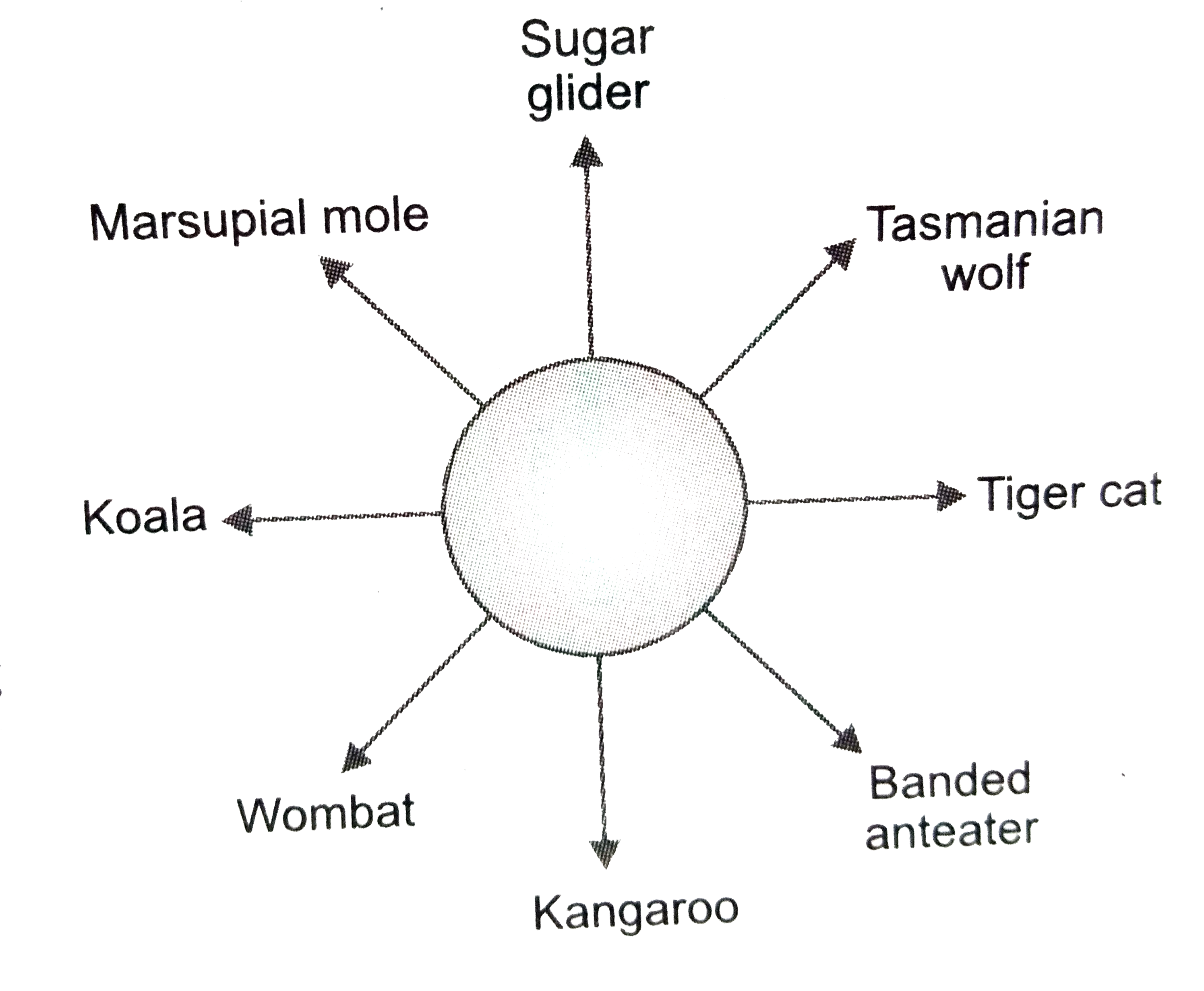[A]: Evolution is descent with modification.
[R]: Evolution is derivation of new species of plants and animals from those existed in past.
If both A and R are true and R is the correct explanation of A
If both A and R are true but R is not the correct explanation of A
If A is true and R is false
If both A and R are false
The correct Answer is:D
Step-by-Step Solution:
1. Understanding Evolution:
- Evolution refers to the changes in species over time. It is a process through which species adapt to their environments, leading to the emergence of new species from common ancestors.
- The concept of evolution was popularized by Charles Darwin, who defined it as "descent with modification."
2. Assertion Analysis ((A)):
- The assertion states that "Evolution is descent with modification." This means that species evolve by changing over generations, which can lead to the development of new traits or characteristics.
3. Reason Analysis ((R)):
- The reason states that "Evolution is the derivation of new species of plants and animals from those that existed in the past." This aligns with the assertion, as it explains how species can evolve from common ancestors over time, resulting in new species.
4. Connecting Assertion and Reason:
- Both the assertion and the reason are interconnected. The assertion provides a general definition of evolution, while the reason gives a specific example of how evolution occurs through the derivation of new species from ancestral forms.
5. Conclusion:
- Both the assertion ((A)) and the reason ((R)) are true, and the reason correctly explains the assertion. Therefore, the statement is valid.
- Evolution refers to the changes in species over time. It is a process through which species adapt to their environments, leading to the emergence of new species from common ancestors.
- The concept of evolution was popularized by Charles Darwin, who defined it as "descent with modification."
- The assertion states that "Evolution is descent with modification." This means that species evolve by changing over generations, which can lead to the development of new traits or characteristics.
- The reason states that "Evolution is the derivation of new species of plants and animals from those that existed in the past." This aligns with the assertion, as it explains how species can evolve from common ancestors over time, resulting in new species.
- Both the assertion and the reason are interconnected. The assertion provides a general definition of evolution, while the reason gives a specific example of how evolution occurs through the derivation of new species from ancestral forms.
- Both the assertion ((A)) and the reason ((R)) are true, and the reason correctly explains the assertion. Therefore, the statement is valid.
Topper's Solved these Questions
Similar Questions
The basis of evolution of new species is
View SolutionThe evolution resulting in the formation of new species is known as
View SolutionMost important stage for the evolution of new species is
View SolutionEvolution -
A. Is descent with modification .
B. Is gradual for Darwin
C. Is a change , in the frequency of an allete within a population , caused by differential reproduction in response to local environmental conditions.
D. Is irreversible
View SolutionMention the specific geographical region where these organisms are found.
Name and explain the phenomenon that has resulted in the evolution of such diverse species in the region.
Explain giving reason the existence of placental wolf and Tasmania wolf sharing the same habitat.
View SolutionFind out the correct option w.r.t. number of plant and animal species recorded in India.
View SolutionExcessive and continous use of pesticides has resulted in evolution of some new species of pests. Explain what must have led to this. What is this type of evolution called ?
View SolutionStudy the figures below and answer the following :
(a)Mention the specific geographical region where these organisms are found.
(b)Name and explain the phenomenon that has resulted in the evolution of such diverse species in the region.
(c )Explain giving reasons the existance of placental wolf and Tasmanian wolf sharing the same habitat.

View Solutionwhich of the following modification of stem protects the plant from following animals and reduces transpiration?
View SolutionAssertion : Plant-animal interactions do not generaly involve co-evolution of the mutualist organisms.
Reason : Evolution of the plants and animals can never go side by side.
View Solution
